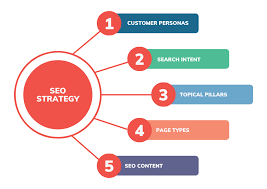“From Zero to Hero: A Step-by-Step Guide to Building a Standout Brand That Drives Success”
“From Zero to Hero: A Step-by-Step Guide to Building a Standout Brand That Drives Success”
Introduction
In today’s competitive market, building a brand that stands out is key to long-term success. This article charts the journey from no brand recognition to household name, detailing strategies, case studies, and actionable insights for aspiring entrepreneurs and established businesses alike.

Section 1: Understanding Branding
1.1 What is Branding?
Branding refers not only to the identity of the logo or the slogan, but everything about the company which comes into the perception of the consumer: values, emotions and all other experiences that one may link to a product or service. 1.2 Importance of Branding
A strong brand differentiates your business from its competitors, engenders customer loyalty, and also has the added advantage of charging more for such a brand. It builds an emotional touch with your target audience, and they would come to your brand over others.
Section 2: Defining Your Brand Identity
2.1 Creating Your Brand Vision And Mission
The vision and mission of your brand should mirror all that you have stood for or will stand for, and this is the forerunner toward the strategy formulation of branding.

2.2 Understand Your Target Audience
Know your audience. Try to understand market demographics and trends in preference and dislike. This will form a basis for branding.

2.3 Developing a Value Proposition
Your value proposition differentiates your brand from any other. It identifies the special benefits which your product or service provides.
Section 3: Building Your Brand Elements
3.1 Designing Brand Logo
It’s most often the first impression of your brand. It should be simple, memorable, and reflective of your brand identity.
3.2 Developing Your Brand Voice
Your brand voice should be resonating with your target audience. Whether friendly, professional, or quirky, consistency across all platforms is what’s most important.
3.3 Defining Your Brand Colors and Typography
Color and typography evoke emotion, which should be aligned with brand personality. Consistency in color and typography reinforces brand recognition.
Section 4: Creating an Online Presence
4.1 Professional Website Design
Your website is your store online. It has to be accessible, appealing, and SEO friendly.
4.2 Building on Social Media
Social media has some seriously effective ways of establishing a brand. Identify what networks are ideal for your audience and make regular use of it.

4.3 Content Marketing Strategy
Produce informative, entertaining, or problem-solving content to help position your brand as an industry expert.
Section 5: Building Brand Awareness
5.1 Influencer Marketing
Influencer partnerships will help increase the reach of your brand. Choose influencers whose values sound similar to your brand.
5.2 SEO Strategies
Search engine optimization will help your brand be more visible online. The focus should be on keyword research, quality content, and backlinks.

5.3 Running Targeted Advertising Campaigns
Advertise online: Online advertising can expose your brand to the intended target audience better, for example, on Google Ads or even social media advertising.
Section 6: Interacting with Your Target Audience
6.1 Community Building
Give your brand a community feeling. Engage in interactions with your target audience through the use of social media, forums, and even events.
6.2 Feedback Gathering and Response
Encourage customer feedback and take it to heart to make further improvements. Responses to feedback show that you value the opinions of your customers.
6.3 Designing Loyalty Programs
Loyalty programs are a good way to encourage repeat purchases and build brand loyalty. Consider offering discounts, rewards, or early access to new products.
Section 7: Measuring Your Brand’s Success
7.1 Key Performance Indicators (KPIs)
Establish the KPIs to measure brand awareness, engagement, and sales. Some of the key indicators include website traffic, social media engagement, and customer retention rates.
7.2 Brand Perception Analysis
Conduct surveys and focus groups to determine how the public views your brand. The knowledge of how your brand is perceived will drive your future strategy.
7.3 Refining Your Strategy
Branding is an ongoing process. Be prepared to change your strategies based on the response and changes in the market.
Conclusion
Brand building from scratch is quite a tiresome yet rewarding journey. Knowing the basics of branding, defining your identity, and engaging with your audience are the ways to transform your brand from zero to hero. Consistency and authenticity are the two most important components that will help you create a brand that stands out.
